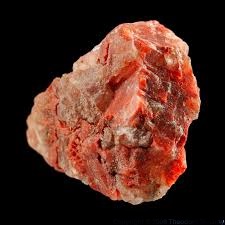The applications of Francium
Francium occurs naturally in nature as the 223Fr radionuclide in uranium minerals. It was first discovered in 1939 by Mademoiselle Marguerite Perey of The Institut Curie (Paris, France). The name comes from the Latin francium, France being the country of its discovery. Francium is the heaviest known member of the alkali-metal series; it occurs as a result of an alpha disintegration of actinium. It can also be made artificially by bombarding thorium with protons. Thirty-three isotopes of francium are recognized.

Characteristics
Francium is one of the most unstable of the naturally occurring elements: its longest-lived isotope, francium-223, has a half-life of only 22 minutes. The only comparable element is astatine, whose most stable natural isotope, astatine-219 (the alpha daughter of francium-223), has a half-life of 56 seconds, although synthetic astatine-210 is much longer-lived with a half-life of 8.1 hours.All isotopes of francium decay into astatine, radium, or radon.Francium-223 also has a shorter half-life than the longest-lived isotope of each synthetic element up to and including element 105, dubnium.
Francium is an alkali metal whose chemical properties mostly resemble those of caesium.A heavy element with a single valence electron, it has the highest equivalent weight of any element.Liquid francium—if created—should have a surface tension of 0.05092 N/m at its melting point.Francium's melting point was estimated to be around 8.0 °C (46.4 °F, 281.0 K).
The melting point is uncertain because of the element's extreme rarity and radioactivity; a different extrapolation based on Dmitri Mendeleev's method gave 20±1.5 °C (68±2.7 °F, 293±1.5 K). The estimated boiling point of 620 °C (1150 °F, 890 K) is also uncertain; the estimate 598 °C (1108 °F, 871 K), as well as the extrapolation from Mendeleev's method of 640 °C (1180 °F, 910 K), have also been suggested.The density of francium is expected to be around 2.48 g/cm3 (Mendeleev's method extrapolates 2.4 g/cm3).
Applications
Due to its instability and rarity, there are no commercial applications for francium.It has been used for research purposes in the fields of chemistryand of atomic structure. Its use as a potential diagnostic aid for various cancers has also been explored,but this application has been deemed impractical.
Francium's ability to be synthesized, trapped, and cooled, along with its relatively simple atomic structure, has made it the subject of specialized spectroscopy experiments. These experiments have led to more specific information regarding energy levels and the coupling constants between subatomic particles. Studies on the light emitted by laser-trapped francium-210 ions have provided accurate data on transitions between atomic energy levels which are fairly similar to those predicted by quantum theory.


